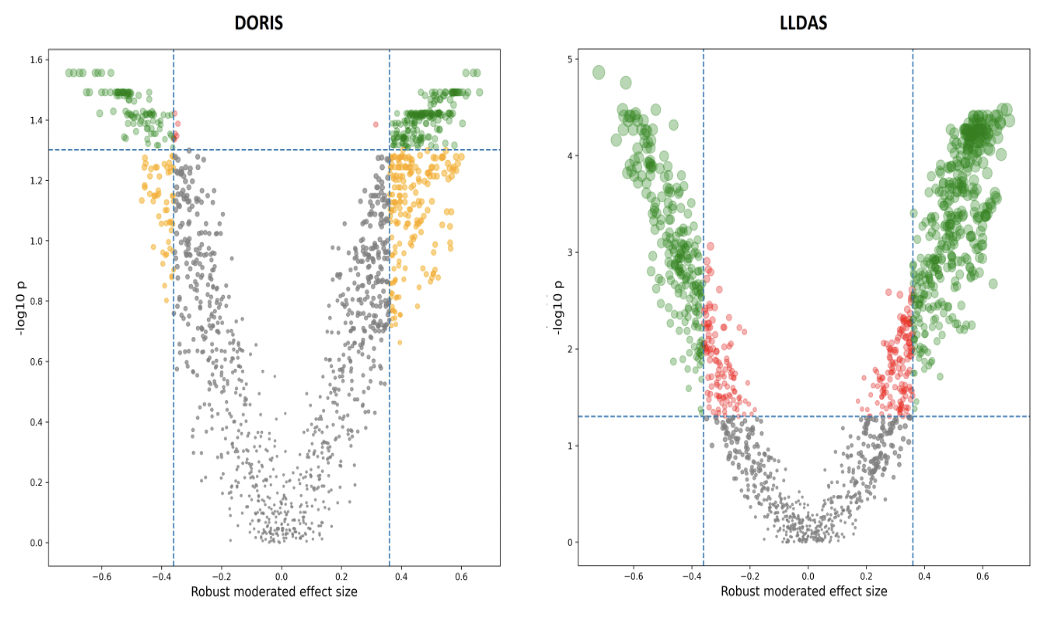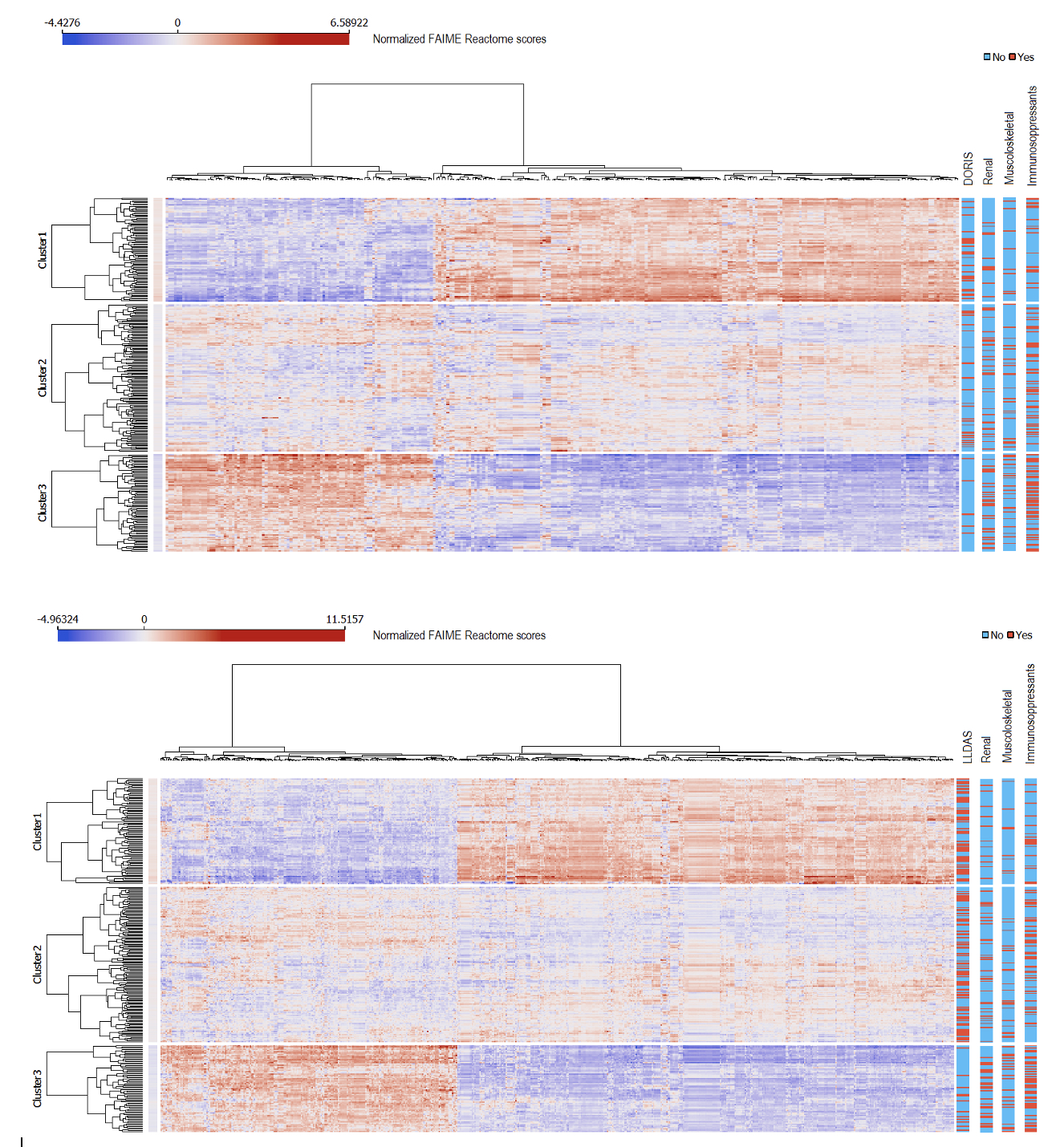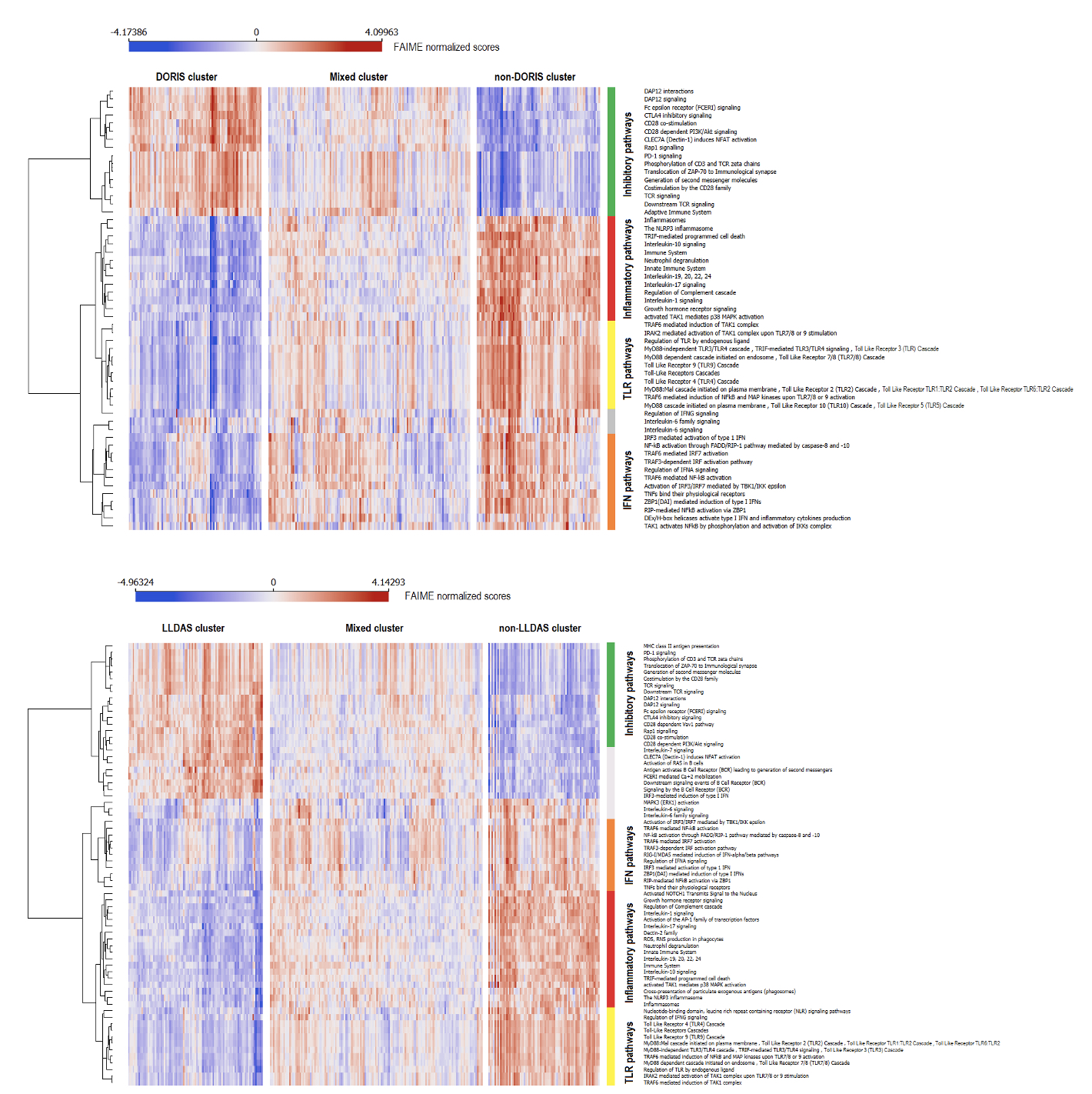Session Information
Date: Monday, November 13, 2023
Title: Abstracts: SLE – Diagnosis, Manifestations, & Outcomes II: Omics
Session Type: Abstract Session
Session Time: 4:00PM-5:30PM
Background/Purpose: Treating to remission or lupus low disease activity state (LLDAS) are conceptual frameworks for the management of SLE, but the biological milieus underlying these states have yet to be explored. We aimed at determining differentially expressed pathways (DEPs) between remission and non-remission state as well as between LLDAS and non-LLDAS.
Methods: Patients with SLE from the PRECISESADS project (NTC02890121) were stratified into patients fulfilling and not fulfilling the criteria of (i) DORIS remission, (ii) LLDAS, and (iii) LLDAS after exclusion of remission attainers. None of the patients had been treated with cyclophosphamide within 6 months or depletive therapies within 12 months from baseline.
Results: We had available data from 321 patients; 17.4% were in DORIS remission and 40.8% were in LLDAS; 28.3% of non-remission patients were in LLDAS. A total of 1465 unique Reactome pathways were selected for analysis. Overall, 288 pathways differed significantly between DORIS remitters and non-remitters with an FDR-corrected p (q)< 0.05 and a robust effect size (dr)≥0.36; of those, 97 were downregulated and 191 upregulated in DORIS remitters. Clustering of significant pathways yielded 3 distinct groups of patients. Accordingly, 604 pathways differed significantly (q< 0.05 and dr≥0.36) in LLDAS vs. non-LLDAS patients; 226 pathways were downregulated and 378 upregulated in patients in LLDAS. After clustering, 3 distinct groups could be identified (separation of classes among clusters, χ2=25.3; p< 0.001). In both cases, the 3 clusters were characterized by differential serological, musculoskeletal and renal activity, as well as use of immunosuppressants. Analysis of adjacent levels of disease activity using forward difference coding in linear regression models showed no DEPs between patients in DORIS remission compared with patients in LLDAS after suppression of the remitting patients. By contrast, 662 DEPs were documented between patients in LLDAS after suppression of the remitting patients and non-LLDAS patients.
Conclusion: We demonstrated for the first time molecular signaling pathways distinguishing remission/LLDAS from active SLE. Remission/LLDAS was associated with reversal of biological processes related to SLE pathogenesis, and processes linked to specific clinical manifestations. While DEP clustering by DORIS remission better grouped patients than clustering by LLDAS, substantiating the conceptual testimonial of remission being the ultimate treatment goal in SLE, the lack of substantial pathway differentiation between the two states justifies LLDAS as an acceptable goal from a biological perspective when remission is not achievable. The study revealed potentiality of existing drugs that could be repurposed to treat SLE and important pathways underlying active SLE whose modulation could aid attainment of remission. Among those, TLR cascades, BTK activity, the CTLA-4-related inhibitory signaling, and the NLRP3 inflammasome pathway were of particular interest.
To cite this abstract in AMA style:
Parodis I, Lindblom J, Barturen G, Ortega Castro R, Cervera R, Pers J, Genre Romero F, Hiepe F, Gerosa M, Kovacs L, De Langhe E, Piantoni S, Stummvoll G, Vasconcelos C, Vigone B, Witte T, Alarcon-Riquelme M, Beretta L. Molecular Characterisation of Remission and Lupus Low Disease Activity State (LLDAS) by Whole-Blood Transcriptome-Based Pathways in a Pan-European Systemic Lupus Erythematosus Cohort [abstract]. Arthritis Rheumatol. 2023; 75 (suppl 9). https://acrabstracts.org/abstract/molecular-characterisation-of-remission-and-lupus-low-disease-activity-state-lldas-by-whole-blood-transcriptome-based-pathways-in-a-pan-european-systemic-lupus-erythematosus-cohort/. Accessed .« Back to ACR Convergence 2023
ACR Meeting Abstracts - https://acrabstracts.org/abstract/molecular-characterisation-of-remission-and-lupus-low-disease-activity-state-lldas-by-whole-blood-transcriptome-based-pathways-in-a-pan-european-systemic-lupus-erythematosus-cohort/



